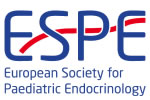hrp0092p2-107 | Fat, Metabolism and Obesity | ESPE2019
Childhood Obesity and Iron Metabolism
Sousa Bebiana , Galhardo Júlia
Introduction: Hypoferraemia is the most common nutritional deficiency worldwide and a leading cause of potential developmental disorders in children. Obesity seems to be associated with this condition, but it is still unclear if it is caused either by depleted iron stores, diminished availability, or both.Aim: To analyse the relationships between childhood obesity, iron metabolism and inflammation....



